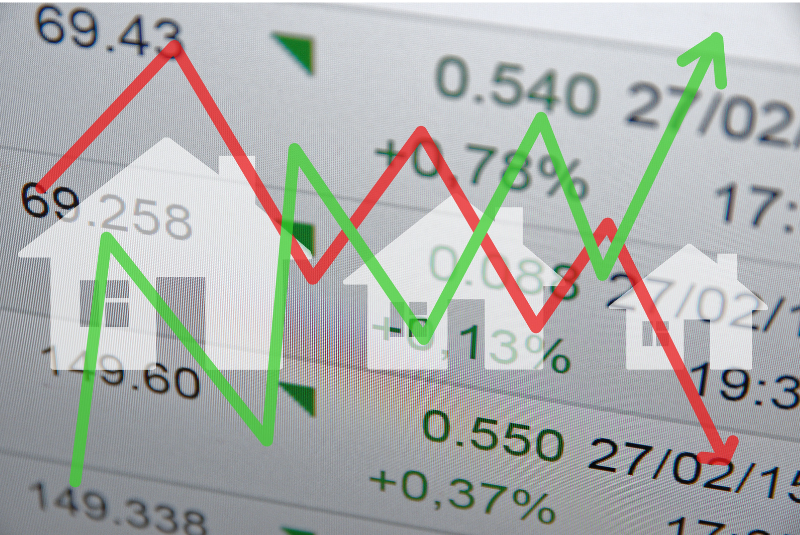Anticipated Homebuyer Market Trends of 2023
Last year was difficult for the housing market. Much of the market is still recovering from the impacts of the initial COVID-19 outbreak in 2020, which damaged sales, supply, and the overall economy. Although there was still significant sales activity in 2022, the market was slow-paced and mortgage rates and home prices reached record highs.
Many sellers, buyers, and economists are hopeful that 2023 will be the year that the market turns around. The first few months of 2023 are expected to remain slow with higher prices, but no one knows exactly what the year’s second half will look like.
Read on to learn about what market trends to anticipate in 2023.
Prices and Rates May Drop — But Don’t Count On It
Buyers saw massive spikes in housing prices and mortgage rates in 2022. The national median home sale price reached a record high of $386,300, over 10% higher than in 2021. This dire increase was largely attributed to the decrease in interest rates and house prices in 2020 and 2021.
Following the massive spikes, mortgage rates began to decrease steadily in December 2022, and this decline has somewhat carried over into the beginning of 2023. Some experts are wary of this decline in rates, believing it won’t last. Mortgage rates may remain as high as they currently are throughout 2023, assuming no other major changes impact the market. Still, there’s also the possibility that rates will continue to drop.
While mortgage rates are in flux, housing prices are a different story. Prices have slowly dropped since the final months of 2022, but economists do not expect this decline to continue. Fortunately, they’re not expected to significantly increase either, though that could change with the economy.
House Sales Will Stay Slow for Several More Months
House sales have slowed since February 2022, largely due to the spikes in mortgage rates and increased cost of living. At this time, economists don’t believe we’ll see an increase in home sales for several more months. 2023’s spring buying season is expected to be similar to that of 2022.
Fortunately, housing sales are expected to pick up during the second half of 2023, though many variables may impact this. If the economy improves and mortgage rates continue to decrease, house sales could return to where they were in 2021 by the end of the year. However, if the economy and mortgage rates remain stagnant, sales could remain steady all year, or even slow down.
Some variables that can impact the rise and fall of house sales include:
- Rental prices
- Inflation
- Federal Reserve rate hikes
- Housing supply
- Job market
- Supply and demand in your area
Housing Supply Will Minimally Increase
With the slow-moving sales and the increased prices of building materials, very few new homes are being added to the housing market. This short housing supply has been a prevalent issue since 2020 and is largely responsible for the increases in house prices and mortgage rates. The limited number of homes initially led to bidding wars and great sales for both buyers and sellers in 2020 and 2021. Unfortunately, that trend slowed by 2022, resulting in stagnant sales and steep prices.
The housing supply is expected to increase by about 23% in 2023 due to the number of houses that aren’t selling as fast as listings are coming onto market. Despite this increase, it will still stay below the standard housing supply that the housing market relied on before 2020. Until significantly more listings are added to the market, the limited housing supply will continue to affect the overall market.
The majority of houses listed in the market in 2023 are largely expected to be fixer-uppers, with very little new construction. Due to the shortage of move-in-ready new construction homes, many buyers may have to settle for covering renovations out of pocket, though this may vary by market.
Increase in First-Time Homebuyers
Although the first half of 2023 is expected to be nearly as bleak as 2022, some positive changes to the housing market may bring good news for first-time home buyers. Buyers who relied on FHA and VA loans were largely left out of the discussion in 2022. Instead, many sellers sold properties to cash buyers, which, in most cases, did not include first-time homeowners.
This year’s anticipated decrease in mortgage rates and increase in housing supply mean more homes will be available and accessible to new home buyers. So long as the economy and job market continue to improve, more adults who weren’t previously in a position to purchase may now be able to. On top of this, the increased rental prices and the previous lack of protections for renters are pushing many people who would’ve otherwise been content with renting to consider homeownership.
Individual Markets Will Vary
Much of 2023’s housing market will depend on the supply and demand in your area. While 2022’s market was consistent across the nation, changes to individual markets are growing more prevalent in 2023. For example, city neighborhoods that attracted buyers in 2020 due to the shift to remote work will likely decrease in price throughout the year as their demand goes down. Meanwhile, houses in less urban areas are expected to increase in price throughout the year as demand goes up.
Buying a house in 2023 can be unpredictable with ever-shifting mortgage rates, housing demand, availability, and home maintenance needs. If and when you do purchase a home this year, consider HomeKeep to simplify the process of homeownership — so you can spend more time enjoying your home and less time concerned about its upkeep.




